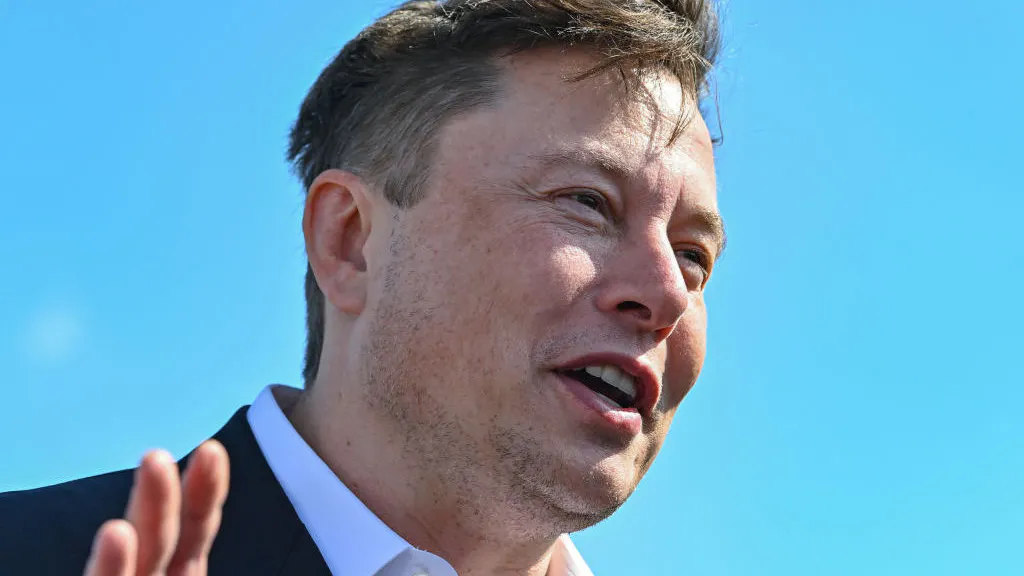Elon Musk’s SpaceX has reportedly launched its public beta test for the global broadband network it is relying upon to help finance the development of a lunar space station and future trips to Mars.
According to a CNBC report, the California rocket maker emailed potential customers who had expressed interest in trying its Starlink constellation of satellites as a high-speed internet provider on Monday. The message included pricing information, details on transmission speeds, and indicated service could start in the U.S. and Canada by the end of this year.
NEWS: SpaceX last night rolled out the "Better Than Nothing Beta" test, revealing Starlink satellite internet service is priced at $99 a month – plus $499 upfront for the user terminal, mounting tripod and wifi router, according to emails seen by CNBC. https://t.co/tZmSFm3kFj
— Michael Sheetz (@thesheetztweetz) October 27, 2020
CNBC reported:
Called the “Better Than Nothing Beta” test, according to multiple screenshots of the email seen by CNBC, initial Starlink service is priced at $99 a month – plus a $499 upfront cost to order the Starlink Kit. That kit includes a user terminal to connect to the satellites, a mounting tripod and a Wi-Fi router. There is also now a Starlink app listed by SpaceX on the Google Play and Apple iOS app stores.
“As you can tell from the title, we are trying to lower your initial expectation,” the emails said, signed “Starlink Team.” “Expect to see data speeds vary from 50Mb/s to 150Mb/s and latency from 20ms to 40ms over the next several months as we enhance the Starlink system. There will also be brief periods of no connectivity at all.”
The emails, sent to an unspecified number of users, marks the launch of SpaceX’s public beta test of the emerging internet service. For the last few months SpaceX has conducted a limited private beta test with employees – which the company has said showed strong results in both latency and download speeds, measures for an internet service provider.
It will get even simpler. Just two instructions for Starlink: plug in & point at sky. Can be done in either order.
— Elon Musk (@elonmusk) June 14, 2020
SpaceX previously said “nearly 700,000 individuals” in America had indicated they would consider using the space-based Starlink service to access the web.
The company has promoted its product as a game-changing communications network for locations where high-speed broadband internet has been “unreliable, expensive, or completely unavailable.”
Whoa, it worked!!
— Elon Musk (@elonmusk) October 22, 2019
Musk said he intends to use profits from the global internet provider to develop and advance other SpaceX innovations. He has estimated Starlink could bring in as much as $30 billion a year, about ten times more than he expects from launch income.
“We see this as a way for SpaceX to generate revenue that can be used to develop more advanced rockets and spaceships,” Musk said last year. “We think this is a key steppingstone on the way to establishing a self-sustaining city on Mars and a base on the moon.”
The Los Angeles Times reported that an executive with the aerospace company said Starlink could provide coverage across the U.S. with just 720 satellites. Nearly 900 have already been deployed into low-Earth orbit. To cover most of the globe would require 1,800 satellites, the SpaceX exec said.
Deployment of 60 Starlink satellites confirmed pic.twitter.com/QVv8m7gClz
— SpaceX (@SpaceX) October 18, 2020
Some organizations located in parts of the U.S. with insufficient broadband access have already experienced the Starlink service’s benefits.
Happy to have the support of @SpaceX’s Starlink internet as emergency responders look to help residents rebuild the town of Malden, WA that was overcome by wildfires earlier this month. #wawildfire pic.twitter.com/xUSQOjcT4T
— WA Emergency Management (@waEMD) September 28, 2020
A government agency in Washington state has been using the technology to help rebuild a town that was overcome by wildfires in September.
Meanwhile, an official representing a Native American tribe in the Pacific Northwest said Starlink “catapulted us into the 21st century.”
You’re most welcome!
— Elon Musk (@elonmusk) October 7, 2020
“What a difference high-speed internet can make!” the Hoh Tribe posted on its Twitter account earlier this month. “Our children can participate in remote learning, residents can access #healthcare. We felt like we’d been paddling up-river with a spoon on this. @SpaceX Starlink made it happen overnight.”
SpaceX has indicated it plans to rapidly expand Starlink to provide “near-global coverage of the populated world by 2021,” the CNBC report said.

.png)
.png)

